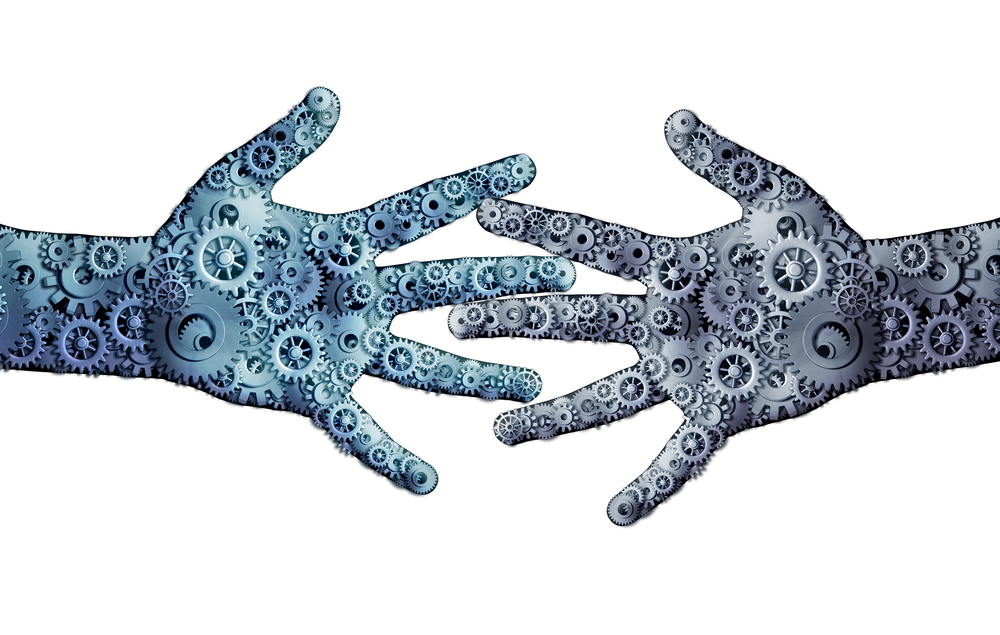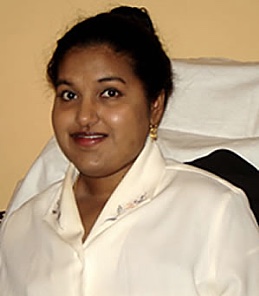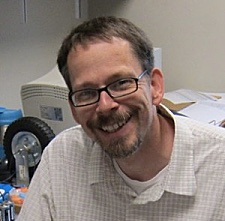Researcher with SMA Seeks Participants for Survey on Attitudes Toward Robotic Devices for Severely Disabled

Kavita Krishnaswamy, a PhD candidate in Computer Science at the University of Maryland, Baltimore County (UMBC), has launched an online survey on attitudes toward robotic aids and how they may improve the quality of life for those with physical disabilities, their family members and caregivers, and is inviting participation. Data derived from the survey will help advance her project of designing prototype assistive robotics devices.
 As a professional researcher with spinal muscular atrophy (SMA), an autosomal recessive genetic disorder that affects control of muscle movement, Ms. Krishnaswamy has a keen personal interest in helping people with SMA and their loved ones cope with and work around the challenges associated with the disease. Autonomy, she believes, is the soul of independent daily living and can be achieved through technological advancement.
As a professional researcher with spinal muscular atrophy (SMA), an autosomal recessive genetic disorder that affects control of muscle movement, Ms. Krishnaswamy has a keen personal interest in helping people with SMA and their loved ones cope with and work around the challenges associated with the disease. Autonomy, she believes, is the soul of independent daily living and can be achieved through technological advancement.
SMA is one of the most common genetic disorders, occurring in 1 in every 6,000 to 10,000 live births. The disease presents with variable degrees of severity as progressive muscle weakness that impairs respiration and mobility. SMA patients can live a normal lifespan, but suffer increased weakness in the proximal muscles of the extremities, resulting in mobility inhibitions.
Persons with SMA can excel in chosen career fields, enjoy travel and recreation, and build relationships as well as anyone. However, lifestyle and support modifications may be necessary to accommodate physical limitations. For example, a car or van can be fitted with special equipment allowing an adult with SMA to drive.
Current treatment options for SMA patients are limited, and there is a high unmet need for new therapeutic and assistive options, both to address coping with symptoms and to slow disease progression.
 Working with her mentor, UMBC assistant professor in Computer Science and Electrical Engineering Dr. Tim Oates, Ms. Krishnaswamy is both a Ford Foundation Predoctoral and National Science Foundation Graduate Research Fellow. She has also worked at the National Science Foundation’s Engineering Research Center–Quality of Life Technology Center (QoLT) in Carnegie Mellon and the University of Pittsburgh, and with IBM Business consulting services.
Working with her mentor, UMBC assistant professor in Computer Science and Electrical Engineering Dr. Tim Oates, Ms. Krishnaswamy is both a Ford Foundation Predoctoral and National Science Foundation Graduate Research Fellow. She has also worked at the National Science Foundation’s Engineering Research Center–Quality of Life Technology Center (QoLT) in Carnegie Mellon and the University of Pittsburgh, and with IBM Business consulting services.
Ms. Krishnaswamy’s research at UMBC involves the development of prototype robotic systems designed to support patient transferring, repositioning, and personal care, with a focus on user control interfaces optimized for operation by persons with severe disabilities. “Results from the survey will help me to design a robotic prototype for independence,” she says, adding that her long-term objectives are commercial
development of device designs in addition to enhancing quality of life.
For more information on Ms. Krishnaswamy and her research, visit www.csee.umbc.edu/~kavi1/
Participation in the survey is voluntary and anonymous, and it is open to people 18 years or older.
More information on the survey, including how to participate, is available at www.csee.umbc.edu/~kavi1/survey.html
This study has been reviewed and approved by the UMBC Institutional Review Board (IRB), and a representative of that Board, from the Office for Research Protections and Compliance, is available to discuss the review process and the rights of research participants. Inquiries can be made by calling (410) 455-2737 or writing [email protected]
Ms. Krishnaswamy’s Prototype Designs include:
• Phoenix Lift System
Effective for independent transfers of people with severe physical disabilities, the Phoenix Lift System is composed of an inflatable pillow with supports for the head, lateral trunk, and thighs that scoops and cradles the body at point of contact.
• Wearable Sling
Also a way of transferring those with severe disabilities, the sling has two hooks for the head and trunk, and a single hook for each forearm and upper arm, and upper leg and lower leg on both the right to left sides, for a total of 12 hooks.
• Piano Mattress
An inflatable contoured mattress, it has several segment chambers filled with air pockets that can be pressurized to raise or lower the height to levels best suiting a user’s needs.
• Piano Lifter
For limb repositioning, one or more tines move and curl around the body part to execute the required movement. It can also scoop a person, moving the body with two or more tines gently grasping the limbs, trunk, and head. Each of the two grippers has three fingers to support the head and fine movement of the limbs.
• Penta-Gripper
Each gripper will gently hug and wrap around a limb or the body to perform movement.
• Motorized Commode Chair
A commode chair with the capacity to adjust seat elevation and tilt, recline the back, lock the brakes on the wheels, and position of the head support, arm rests, and foot rests, with a remote control or mounted joystick.
• Toilet Tongs
A device that resembles motorized tongs with a small faucet in the center that functions as a bidet.
• UniGripper
A universal gripper for feeding, wiping the mouth with a napkin, combing the hair, and other fine motor activities.
• Robotic Toothbrush
A system with a small-headed toothbrush, pulsating water jet, and a container for spitting out secretions.
Interface Designs
• BCI for Assisting Arm Movement
Ms. Krishnaswamy and her research partners have designed an interface for moving the simulated arm of an avatar. It shows the feasibility of using BCI for self-directed arm repositioning tasks using an accessible GUI with the Emotiv Epoc BCI Headset.
• iKeyboard: C++ Prediction Interface
The researchers have designed and developed a Web-based accessible word prediction interface with a virtual keyboard to facilitate C++ programming code for users with physical disabilities and visual disabilities. All interface components also have the ability to be recognized, and have been extensively tested with the JAWS screen reading aloud software to support users with visual disabilities. The prototype is online at www.csee.umbc.edu/~kavi1/IKeyboard
Videos demonstrating the function of these prototype assistive device designs can be viewed at www.csee.umbc.edu/~kavi1/
Sources:
Kavita Krishnaswamy
University of Maryland, Baltimore County
Cure SMA







